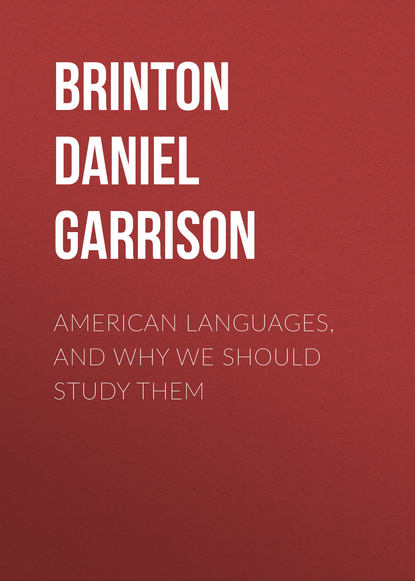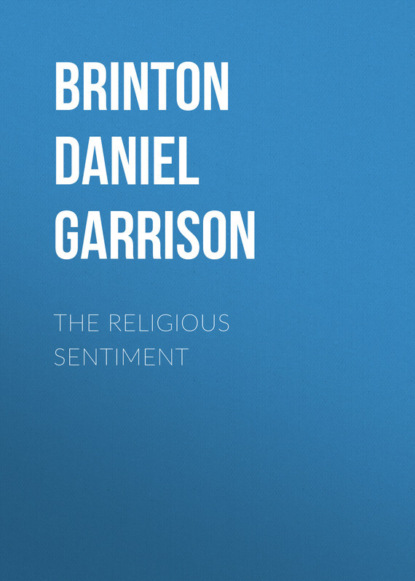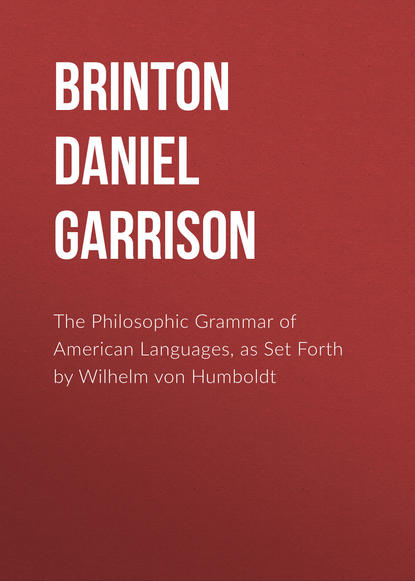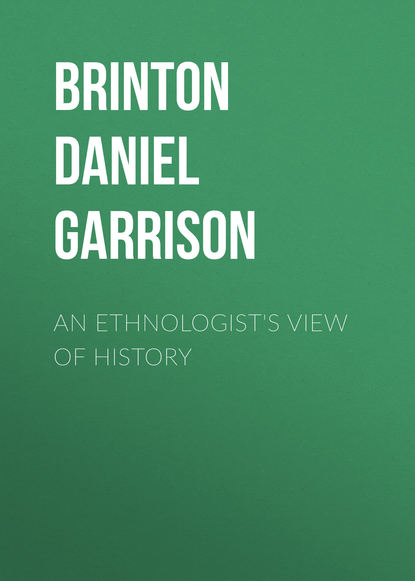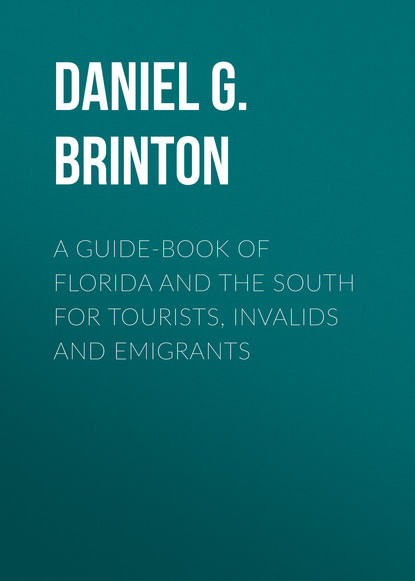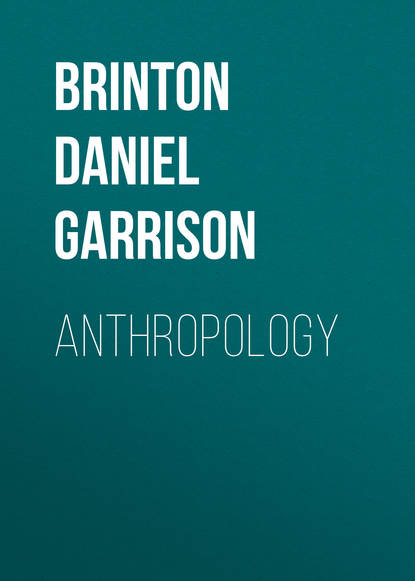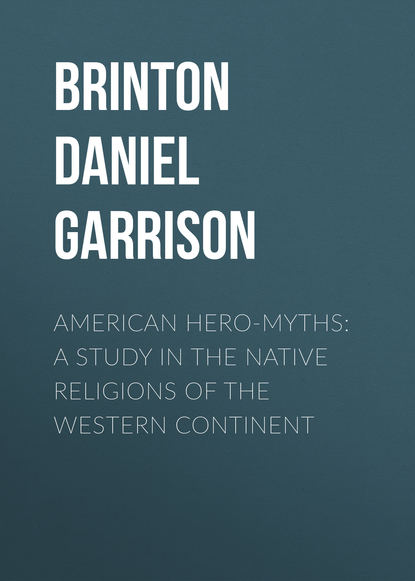
Полная версия
American Hero-Myths: A Study in the Native Religions of the Western Continent
[Footnote 14: John Tanner, Narrative of Captivity and Adventure, p. 351. Schoolcraft, Indian Tribes, Vol. v, p. 420, etc.]
[Footnote 15: Thomas Campanius (Holm), Description of the Province of New Sweden, book iii, ch. xi. Campanius does not give the name of the hero-god, but there can be no doubt that it was the "Great Hare."]
[Footnote 16: The sources from which I draw the elements of the Iroquois hero-myth of Ioskeha are mainly the following: Relations de la Nouvelle France, 1636, 1640, 1671, etc. Sagard, Histoire du Canada, pp. 451, 452 (Paris, 1636); David Cusick, Ancient History of the Six Nations, and manuscript material kindly furnished me by Horatio Hale, Esq., who has made a thorough study of the Iroquois history and dialects.]
[Footnote 17: Such epithets were common, in the Egyptian religion, to most of the gods of fertility. Amun, called in some of the inscriptions "the soul of Osiris," derives his name from the root men, to impregnate, to beget. In the Karnak inscriptions he is also termed "the husband of his mother." This, too, was the favorite appellation of Chem, who was a form of Horos. See Dr. C.P. Tiele, History of the Egyptian Religion, pp. 124, 146. 149, 150, etc.]
[Footnote 18: I have analyzed these words in a note to another work, and need not repeat the matter here, the less so, as I am not aware that the etymology has been questioned. See Myths of the New World, 2d Ed., p. 183, note.]
[Footnote 19: A careful analysis of this name is given by Father J.A. Cuoq, probably the best living authority on the Iroquois, in his Lexique de la Langue Iroquoise, p. 180 (Montreal, 1882). Here also the Iroquois followed precisely the line of thought of the ancient Egyptians. Shu, in the religion of Heliopolis, represented the cosmic light and warmth, the quickening, creative principle. It is he who, as it is stated in the inscriptions, "holds up the heavens," and he is depicted on the monuments as a man with uplifted arms who supports the vault of heaven, because it is the intermediate light that separates the earth from the sky. Shu was also god of the winds; in a passage of the Book of the Dead, he is made to say: "I am Shu, who drives the winds onward to the confines of heaven, to the confines of the earth, even to the confines of space." Again, like Ioskeha, Shu is said to have begotten himself in the womb of his mother, Nu or Nun, who was, like Ataensic, the goddess of water, the heavenly ocean, the primal sea. Tiele, History of the Egyptian Religion, pp. 84-86.]
[Footnote 20: Cuoq, Lexique de la Langue Iroquoise, p. 180, who gives a full analysis of the name.]
CHAPTER III.
THE HERO-GOD OF THE AZTEC TRIBES
§1. The Two Antagonists.
THE CONTEST OF QUETZALCOATL AND TEZCATLIPOCA–QUETZALCOATL THE LIGHT-GOD–DERIVATION OF HIS NAME–TITLES OF TEZCATLIPOCA–IDENTIFIED WITH DARKNESS, NIGHT AND GLOOM.
§2. Quetzalcoatl the God.
MYTH OF THE FOUR BROTHERS–THE FOUR SUNS AND THE ELEMENTAL CONFLICT–NAMES OF THE FOUR BROTHERS.
§3. Quetzalcoatl the Hero of Tula.
TULA THE CITY OF THE SUN–WHO WERE THE TOLTECS?–TLAPALLAN AND XALAC–THE BIRTH OF THE HERO-GOD–HIS VIRGIN MOTHER, CHIMALMATL–HIS MIRACULOUS CONCEPTION–AZTLAN, THE LAND OF SEVEN CAVES, AND COLHUACAN, THE BENDED MOUNT–THE MAID XOCHITL AND THE ROSE GARDEN OF THE GODS–QUETZALCOATL AS THE WHITE AND BEARDED STRANGER.
THE GLORY OF THE LORD OF TULA–THE SUBTLETY OF THE SORCERER, TEZCATLIPOCA–THE MAGIC MIRROR AND THE MYSTIC DRAUGHT–THE MYTH EXPLAINED–THE PROMISE OF REJUVENATION–THE TOVEYO AND THE MAIDEN–THE JUGGLERIES OF TEZCATLIPOCA–DEPARTURE OF QUETZALCOATL FROM TULA–QUETZALCOATL AT CHOLULA–HIS DEATH OR DEPARTURE–THE CELESTIAL GAME OF BALL AND TIGER SKIN–QUETZALCOATL AS THE PLANET VENUS.
§4. Quetzalcoatl as Lord of the Winds.
THE LORD OF THE FOUR WINDS–HIS SYMBOLS THE WHEEL OF THE WINDS, THE PENTAGON AND THE CROSS–CLOSE RELATION TO THE GODS OF RAIN AND WATERS–INVENTOR OF THE CALENDAR–GOD OF FERTILITY AND CONCEPTION–RECOMMENDS SEXUAL AUSTERITY–PHALLIC SYMBOLS–GOD OF MERCHANTS–THE PATRON OF THIEVES–HIS PICTOGRAPHIC REPRESENTATIONS.
§5. The Return of Quetzalcoatl.
HIS EXPECTED RE-APPEARANCE–THE ANXIETY OF MONTEZUMA–HIS ADDRESS TO CORTES–THE GENERAL EXPECTATION–EXPLANATION OF HIS PREDICTED RETURN.
I now turn from the wild hunting tribes who peopled the shores of the Great Lakes and the fastnesses of the northern forests to that cultivated race whose capital city was in the Valley of Mexico, and whose scattered colonies were found on the shores of both oceans from the mouths of the Rio Grande and the Gila, south, almost to the Isthmus of Panama. They are familiarly known as Aztecs or Mexicans, and the language common to them all was the Nahuatl, a word of their own, meaning "the pleasant sounding."
Their mythology has been preserved in greater fullness than that of any other American people, and for this reason I am enabled to set forth in ampler detail the elements of their hero-myth, which, indeed, may be taken as the most perfect type of those I have collected in this volume.
§1. The Two Antagonists.
The culture hero of the Aztecs was Quetzalcoatl, and the leading drama, the central myth, in all the extensive and intricate theology of the Nahuatl speaking tribes was his long contest with Tezcatlipoca, "a contest," observes an eminent Mexican antiquary, "which came to be the main element in the Nahuatl religion and the cause of its modifications, and which materially influenced the destinies of that race from its earliest epochs to the time of its destruction."[1]
The explanations which have been offered of this struggle have varied with the theories of the writers propounding them. It has been regarded as a simple historical fact; as a figure of speech to represent the struggle for supremacy between two races; as an astronomical statement referring to the relative positions of the planet Venus and the Moon; as a conflict between Christianity, introduced by Saint Thomas, and the native heathenism; and as having other meanings not less unsatisfactory or absurd.
Placing it side by side with other American hero-myths, we shall see that it presents essentially the same traits, and undoubtedly must be explained in the same manner. All of them are the transparent stories of a simple people, to express in intelligible terms the daily struggle that is ever going on between Day and Night, between Light and Darkness, between Storm and Sunshine.
Like all the heroes of light, Quetzalcoatl is identified with the East. He is born there, and arrives from there, and hence Las Casas and others speak of him as from Yucatan, or as landing on the shores of the Mexican Gulf from some unknown land. His day of birth was that called Ce Acatl, One Reed, and by this name he is often known. But this sign is that of the East in Aztec symbolism.[2] In a myth of the formation of the sun and moon, presented by Sahagun,[3] a voluntary victim springs into the sacrificial fire that the gods have built. They know that he will rise as the sun, but they do not know in what part of the horizon that will be. Some look one way, some another, but Quetzalcoatl watches steadily the East, and is the first to see and welcome the Orb of Light. He is fair in complexion, with abundant hair and a full beard, bordering on the red,[4] as are all the dawn heroes, and like them he was an instructor in the arts, and favored peace and mild laws.
His name is symbolic, and is capable of several equally fair renderings. The first part of it, quetzalli, means literally a large, handsome green feather, such as were very highly prized by the natives. Hence it came to mean, in an adjective sense, precious, beautiful, beloved, admirable. The bird from which these feathers were obtained was the quetzal-tototl (tototl, bird) and is called by ornithologists Trogon splendens.
The latter part of the name, coatl, has in Aztec three entirely different meanings. It means a guest, also twins, and lastly, as a syncopated form of cohuatl, a serpent. Metaphorically, cohuatl meant something mysterious, and hence a supernatural being, a god. Thus Montezuma, when he built a temple in the city of Mexico dedicated to the whole body of divinities, a regular Pantheon, named it Coatecalli, the House of the Serpent.[5]
Through these various meanings a good defence can be made of several different translations of the name, and probably it bore even to the natives different meanings at different times. I am inclined to believe that the original sense was that advocated by Becerra in the seventeenth century, and adopted by Veitia in the eighteenth, both competent Aztec scholars.[6] They translate Quetzalcoatl as "the admirable twin," and though their notion that this refers to Thomas Didymus, the Apostle, does not meet my views, I believe they were right in their etymology. The reference is to the duplicate nature of the Light-God as seen in the setting and rising sun, the sun of to-day and yesterday, the same yet different. This has its parallels in many other mythologies.[7]
The correctness of this supposition seems to be shown by a prevailing superstition among the Aztecs about twins, and which strikingly illustrates the uniformity of mythological conceptions throughout the world. All readers are familiar with the twins Romulus and Remus in Roman story, one of whom was fated to destroy their grandfather Amulius; with Edipus and Telephos, whose father Laios, was warned that his death would be by one of his children; with Theseus and Peirithoos, the former destined to cause the suicide of his father Aigeus; and with many more such myths. They can be traced, without room for doubt, back to simple expressions of the fact that the morning and the evening of the one day can only come when the previous day is past and gone; expressed figuratively by the statement that any one day must destroy its predecessor. This led to the stories of "the fatal children," which we find so frequent in Aryan mythology.[8]
The Aztecs were a coarse and bloody race, and carried out their superstitions without remorse. Based, no doubt, on this mythical expression of a natural occurrence, they had the belief that if twins were allowed to live, one or the other of them would kill and eat his father or mother; therefore, it was their custom when such were brought into the world to destroy one of them.[9]
We shall see that, as in Algonkin story Michabo strove to slay his father, the West Wind, so Quetzalcoatl was in constant warfare with his father, Tezcatlipoca-Camaxtli, the Spirit of Darkness. The effect of this oft-repeated myth on the minds of the superstitious natives was to lead them to the brutal child murder I have mentioned.
It was, however, natural that the more ordinary meaning, "the feathered or bird-serpent," should become popular, and in the picture writing some combination of the serpent with feathers or other part of a bird was often employed as the rebus of the name Quetzalcoatl.
He was also known by other names, as, like all the prominent gods in early mythologies, he had various titles according to the special attribute or function which was uppermost in the mind of the worshipper. One of these was Papachtic, He of the Flowing Locks, a word which the Spaniards shortened to Papa, and thought was akin to their title of the Pope. It is, however, a pure Nahuatl word,[10] and refers to the abundant hair with which he was always credited, and which, like his ample beard, was, in fact, the symbol of the sun's rays, the aureole or glory of light which surrounded his face.
His fair complexion was, as usual, significant of light. This association of ideas was so familiar among the Mexicans that at the time of an eclipse of the sun they sought out the whitest men and women they could find, and sacrificed them, in order to pacify the sun.[11]
His opponent, Tezcatlipoca, was the most sublime figure in the Aztec Pantheon. He towered above all other gods, as did Jove in Olympus. He was appealed to as the creator of heaven and earth, as present in every place, as the sole ruler of the world, as invisible and omniscient.
The numerous titles by which he was addressed illustrate the veneration in which he was held. His most common name in prayers was Titlacauan, We are his Slaves. As believed to be eternally young, he was Telpochtli, the Youth; as potent and unpersuadable, he was Moyocoyatzin, the Determined Doer;[12] as exacting in worship, Monenegui, He who Demands Prayers; as the master of the race, Teyocoyani, Creator of Men, and Teimatini, Disposer of Men. As he was jealous and terrible, the god who visited on men plagues, and famines, and loathsome diseases, the dreadful deity who incited wars and fomented discord, he was named Yaotzin, the Arch Enemy, Yaotl necoc, the Enemy of both Sides, Moquequeloa, the Mocker, Nezaualpilli, the Lord who Fasts, Tlamatzincatl, He who Enforces Penitence; and as dark, invisible and inscrutable, he was Yoalli ehecatl, the Night Wind.[13]
He was said to be formed of thin air and darkness; and when he was seen of men it was as a shadow without substance. He alone of all the gods defied the assaults of time, was ever young and strong, and grew not old with years.[14] Against such an enemy who could hope for victory?
The name "Tezcatlipoca" is one of odd significance. It means The Smoking Mirror. This strange metaphor has received various explanations. The mirrors in use among the Aztecs were polished plates of obsidian, trimmed to a circular form. There was a variety of this black stone called tezcapoctli, smoky mirror stone, and from this his images were at times made.[15] This, however, seems too trivial an explanation.
Others have contended that Tezcatlipoca, as undoubtedly the spirit of darkness and the night, refers, in its meaning, to the moon, which hangs like a bright round mirror in the sky, though partly dulled by what the natives thought a smoke.[16]
I am inclined to believe, however, that the mirror referred to is that first and most familiar of all, the surface of water: and that the smoke is the mist which at night rises from lake and river, as actual smoke does in the still air.
As presiding over the darkness and the night, dreams and the phantoms of the gloom were supposed to be sent by Tezcatlipoca, and to him were sacred those animals which prowl about at night, as the skunk and the coyote.[17]
Thus his names, his various attributes, his sacred animals and his myths unite in identifying this deity as a primitive personification of the Darkness, whether that of the storm or of the night.[18]
This is further shown by the beliefs current as to his occasional appearance on earth. This was always at night and in the gloom of the forest. The hunter would hear a sound like the crash of falling trees, which would be nothing else than the mighty breathings of the giant form of the god on his nocturnal rambles. Were the hunter timorous he would die outright on seeing the terrific presence of the god; but were he of undaunted heart, and should rush upon him and seize him around the waist, the god was helpless and would grant him anything he wished. "Ask what you please," the captive deity would say, "and it is yours. Only fail not to release me before the sun rises. For I must leave before it appears."[19]
§2. Quetzalcoatl the God.
In the ancient and purely mythical narrative, Quetzalcoatl is one of four divine brothers, gods like himself, born in the uttermost or thirteenth heaven to the infinite and uncreated deity, which, in its male manifestations, was known as Tonaca tecutli, Lord of our Existence, and Tzin teotl, God of the Beginning, and in its female expressions as Tonaca cihuatl, Queen of our Existence, Xochiquetzal, Beautiful Rose, Citlallicue, the Star-skirted or the Milky Way, Citlalatonac, the Star that warms, or The Morning, and Chicome coatl, the Seven Serpents.[20]
The usual translation of Tonaca tecutli is "God of our Subsistence," to, our, naca, flesh, tecutli, chief or lord. It really has a more subtle meaning. Naca is not applied to edible flesh–that is expressed by the word nonoac--but is the flesh of our own bodies, our life, existence. See Anales de Cuauhtitlan, p. 18, note.]
Of these four brothers, two were the black and the red Tezcatlipoca, and the fourth was Huitzilopochtli, the Left handed, the deity adored beyond all others in the city of Mexico. Tezcatlipoca–for the two of the name blend rapidly into one as the myth progresses–was wise beyond compute; he knew all thoughts and hearts, could see to all places, and was distinguished for power and forethought.
At a certain time the four brothers gathered together and consulted concerning the creation of things. The work was left to Quetzalcoatl and Huitzilopochtli. First they made fire, then half a sun, the heavens, the waters and a certain great fish therein, called Cipactli, and from its flesh the solid earth. The first mortals were the man, Cipactonal, and the woman, Oxomuco,[21] and that the son born to them might have a wife, the four gods made one for him out of a hair taken from the head of their divine mother, Xochiquetzal.
Now began the struggle between the two brothers, Tezcatlipoca and Quetzalcoatl, which was destined to destroy time after time the world, with all its inhabitants, and to plunge even the heavenly luminaries into a common ruin.
The half sun created by Quetzalcoatl lighted the world but poorly, and the four gods came together to consult about adding another half to it. Not waiting for their decision, Tezcatlipoca transformed himself into a sun, whereupon the other gods filled the world with great giants, who could tear up trees with their hands. When an epoch of thirteen times fifty-two years had passed, Quetzalcoatl seized a great stick, and with a blow of it knocked Tezcatlipoca from the sky into the waters, and himself became sun. The fallen god transformed himself into a tiger, and emerged from the waves to attack and devour the giants with which his brothers had enviously filled the world which he had been lighting from the sky. After this, he passed to the nocturnal heavens, and became the constellation of the Great Bear.
Конец ознакомительного фрагмента.
Текст предоставлен ООО «ЛитРес».
Прочитайте эту книгу целиком, купив полную легальную версию на ЛитРес.
Безопасно оплатить книгу можно банковской картой Visa, MasterCard, Maestro, со счета мобильного телефона, с платежного терминала, в салоне МТС или Связной, через PayPal, WebMoney, Яндекс.Деньги, QIWI Кошелек, бонусными картами или другим удобным Вам способом.






